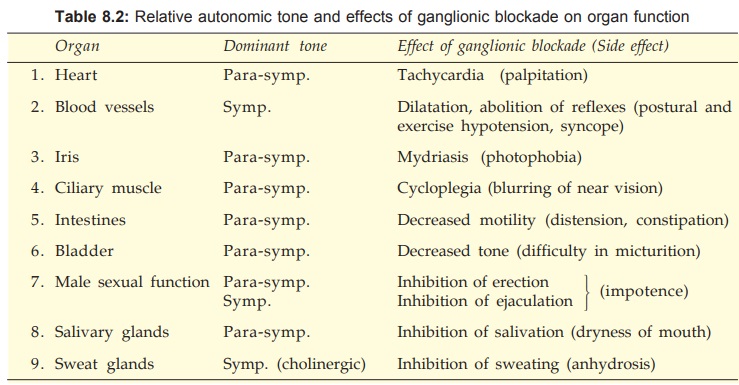Ganglion Blocking Agents
| Home | | Pharmacology |Chapter: Essential pharmacology : Anticholinergic Drugs And Drugs Acting On Autonomic Ganglia
The competitive ganglion blockers were used in the 1950s for hypertension and peptic ulcer, but have been totally replaced now because they produce a number of intolerable side effects.
GANGLION BLOCKING AGENTS
A) Competitive blockers
Quaternary ammonium
compounds Hexamethonium,Pentolinium
Amines (secondary/tertiary) Mecamylamine,
Pempidine
Monosulfonium compound Trimethaphan
camforsulfonate
B) Persistent depolarising
blockers
Nicotine (large dose)
Anticholinesterases (large dose)
The competitive
ganglion blockers were used in the 1950s for hypertension and peptic ulcer, but
have been totally replaced now because they produce a number of intolerable
side effects (see Table 8.2). In
fact, these side effects help in understanding the relative roles of sympathetic
and parasympathetic divisions in regulating the various organ functions.

Trimethaphan It is an ultrashort acting ganglion blocker; has been occasionally used to produce
controlled hypotension and in hypertensive emergency due to aortic dissection.
Mecamylamine alone, as well as in combination with nicotine
patch, has been tried for smoking cessation. It appears to block the reward
effect of nicotine and improve abstinence rate compared to placebo. Constipation
occurred in many subjects, and it is not an approved drug.
There is at present no
clinical relevance of ganglion blockers.
Related Topics
